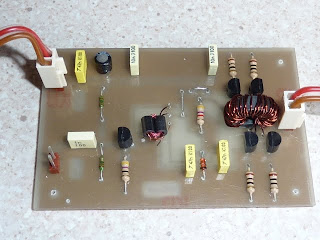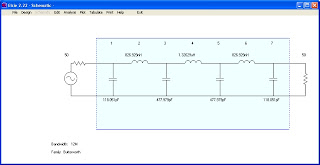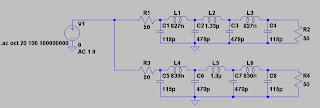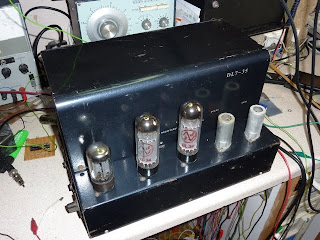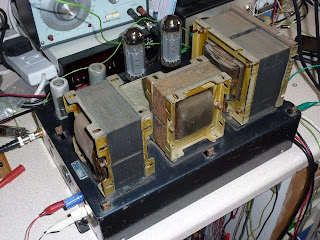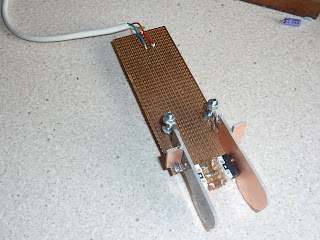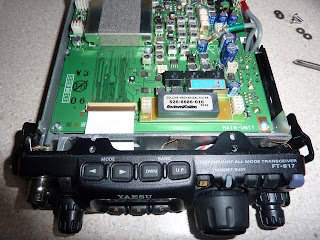I've always fancied having a go at QRSS, but didn't want either to struggle with getting a VFO to run sufficiently stable or (worse still) prise open the m0xpd wallet to buy a crystal. However, with my USB Synth, a balanced mixer and a VXO, I could easily put out some FSK QRSS code to make a beacon.
I knocked together a VXO (using a 3.579 MHz colour burst crystal and a Zener as a varicap).
Here's the salient part of my design...

and here's the initial lash-up on a breadboard...
I made an Ugly version for longevity...

Everything seemed to run OK - I could even generate FSK with the Funky Keyer! However, I wanted to be able to send my call continuously and SLOWLY - so I added a "Beacon" mode to my PIC keyer software and knocked up a little beacon keyer circuit, seen below (at left) with the rest of the beacon-in-waiting...

I downloaded Argo and set up an RF generator at six-and-a-half Megs which, with my 3.579 MHz put me in the ball-park of the beacon section of the 30m band.
Here's the first test run...
For the illiterate amongst you, it says "xpd" - the screen isn't wide enough to fit the whole call sign in at the rate I was sending. I wasn't really "transmitting" - just picking up radiation direct from the circuit - there's no PA, filter, etc at this stage.
The drift in the picture above is down to the old Tektronix RF generator - I hope things will get significantly better when I hook up the USB synth in its place.
This has been fun and I look forward to trying to appear on other people's Argo screens!
...-.- de m0xpd
Update:-
I couldn't resist hooking up the USB Synth...
The drift in the picture above is down to the old Tektronix RF generator - I hope things will get significantly better when I hook up the USB synth in its place.
This has been fun and I look forward to trying to appear on other people's Argo screens!
...-.- de m0xpd
Update:-
I couldn't resist hooking up the USB Synth...









